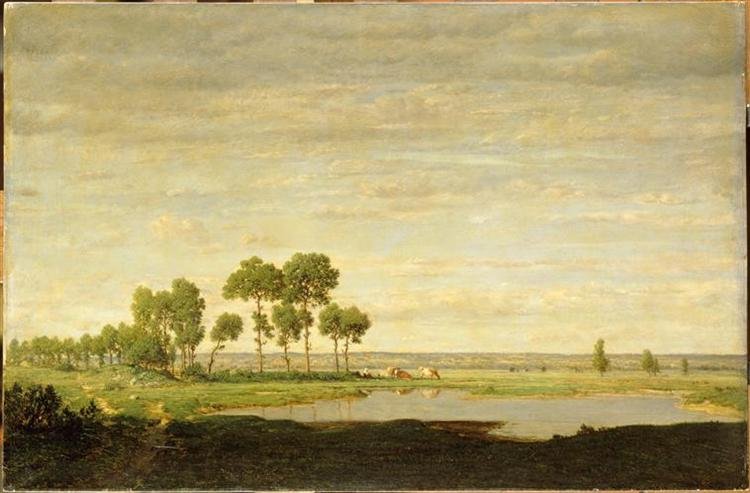Choices in 21st Century Landscape Painting
Following a residency in Italy in 2013, I knew that I had to bring the horizon back into my paintings, and I wanted to do that in a way that was fully engaged with my subject matter, leaving abstraction behind and delineating as honestly as possible what was before my eyes. In using the term "delineating," I'm indicating that drawing is the foundation on which I build every painting. It also meant - and herein lie the traps and perils of landscape painting - that I would have to confront and work beyond my inclinations and inspirations. The history of painting has a mighty strong pull on every painter. I have a deep affinity for Southern Song dynasty landscape scrolls where the specific is idealized (but never abstracted), and where one's mind can wander endlessly through near mountains and far valleys.
Equally compelling are 19th century European landscapes, especially those by Théodore Rousseau. I'm mesmerized by the way he could make a graphite or charcoal drawing breathe on the paper. Here's what he had to say about composition. ". . . I mean by composition that which is within us entering as much as possible into the external reality of things. If it were otherwise, the mason armed with his lath would have quickly finished the composition of a painting representing the sea. A line traced at any height on the canvas would suffice. Now, who will compose the sea, if not the artist's soul? There is composition when the objects depicted are not depicted for themselves, but for the purpose of containing, under a natural appearance, the echoes that they have placed in our soul."
It's that reference to the echoes of our soul that helps me understand the common ground of the idealized Chinese landscape and the naturalism of Western Romanticism. With that as a starting point, there are some very basic and practical choices I make in attempting a 21st century American landscape.
